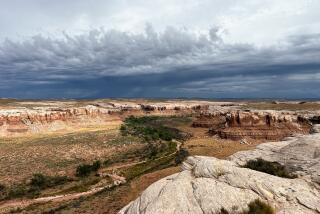Seeing the forest, and trees
- Share via
By ordering a yearlong “time out” on new roads in national forests, President Obama has done both the politically prudent thing and the wise one. His move will forestall large-scale road building in 58 million pristine acres of forests, but by giving the Agriculture secretary authority to allow limited roads, it also will provide needed flexibility that the so-called roadless rule precluded.
The Clinton-era rule, intended to protect environmentally valuable wilderness in the national forests, was quickly undermined by the Bush administration. Despite heated opposition from the majority of those who offered comments on the issue to the federal government, President Bush pushed through a new policy favored by the timber industry that left much of the forests’ fate in the hands of the states where they were located. It was an incoherent strategy that kept most roadless areas intact in California but called for major road building in states such as Idaho. The decisions had little to do with correctly balancing forest use with forest protection and everything to do with state politics.
National forests aren’t the property of individual states. They are national treasures paid for with federal dollars, not a convenient source of local enrichment. To be sure, those treasures include lumber and other resources that might be worth tapping; unlike national parks, the forests were always intended for a mix of uses. But those sensitive environmental decisions -- the roads create erosion and water-pollution problems -- should be made by the U.S. Department of Agriculture, which has responsibility for the national forest system.
Construction of the roads, which almost solely benefit loggers and other industrial operations, is paid for by the federal government, leaving taxpayers in the odd position of funding damage to their own forests. This sort of subsidy makes little sense under current economic conditions. Yet the forests have been so underfunded that in many of them volunteers do most of the trail maintenance. There isn’t enough staff to keep the land in shape for recreational use.
The Obama administration should spend the next year developing a comprehensive strategy for managing the national forests, including a plan for catching up on a billion dollars’ worth of deferred maintenance as well as a reasonably flexible rule for building roads. The forests can use the breathing time, but more than that, they need adequate planning and funding to restore them to their status as the magnificent public resource Theodore Roosevelt envisioned when he established the U.S. Forest Service in 1905.
More to Read
Sign up for The Wild
We’ll help you find the best places to hike, bike and run, as well as the perfect silent spots for meditation and yoga.
You may occasionally receive promotional content from the Los Angeles Times.






